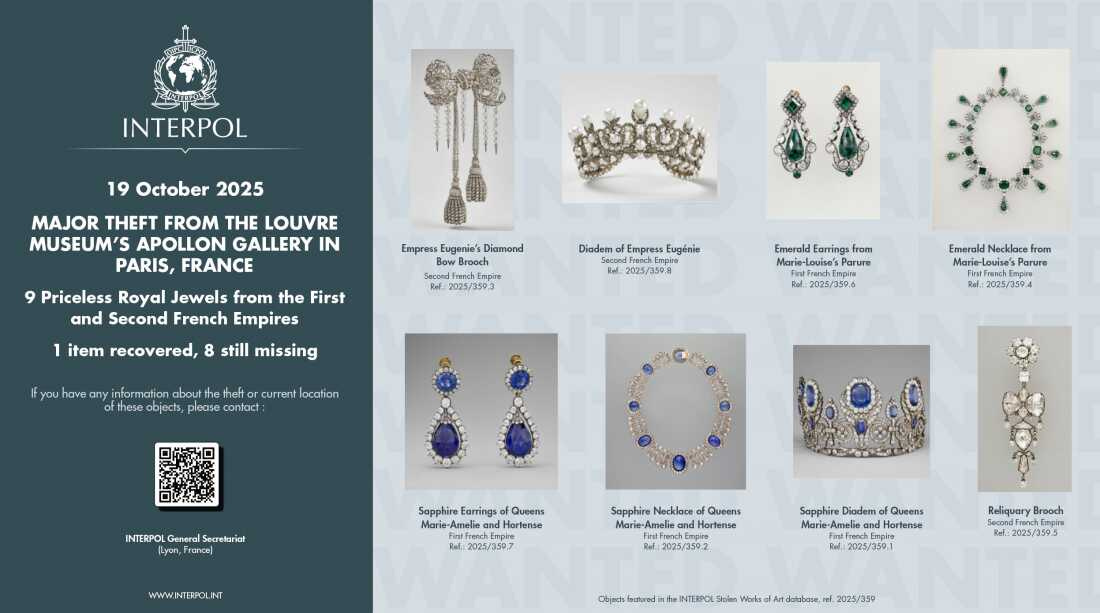CGI Group, the Israeli firm brought in by French authorities to assist in the search for the crown jewels stolen from the Louvre nearly two weeks ago, is headed by Zvika Naveh. It’s no surprise that Naveh’s firm is involved. They are said to have been instrumental in the recovery of jewels taken in the 2019 heist from the Green Vault in Dresden.
On the 21st of October, Naveh described the gang that pulled off the Louvre heist to the media, saying, “They didn’t commit this job by coincidence. They had inside information and cooperation from the inside.”
Another source told the Telegraph, there is “evidence [a] member of the museum security team was in contact with thieves.”
But this week, prosecutor Laure Beccuau said there was not yet evidence that there was inside help.
As I’ve said on a number of news outlets, I think it’s highly likely there was some sort of inside information. Not only do at least 80% of museum heists involve some manner of insider assistance, but the methodology of the heist points to it. While employing a ruse to gain entrance into a museum, it is difficult to understand why thieves would chose to break into a museum that is already opened. I have speculated that perhaps they understood that this was the key to getting to the jewels in the Apollo Gallery without interference from the large crowds that visit it on a daily basis. Why not, then, break in while the museum was closed? The answer to that might rest in the fact that when museums open, certain security systems are deactivated. For instance, avoiding motion sensors can best be achieved during open hours.
More curious still, the Louvre has denied contacting CGI at all, despite this report:
In a new detail in the case, Israeli news outlet Ynet reported that five days after the heist, the alleged thieves contacted Israeli security firm CGI Group, through a representative, to negotiate the sale of the stolen jewels on the darknet. CGI “engaged in a series of encrypted chats with the representative and received indications that he indeed possessed at least some of the stolen items,” Ynet wrote.
Perhaps the Louvre didn’t directly seek CGI’s help. Maybe it was law enforcement, an insurer, or some other intermediary. One thing is for sure, though: CGI is in the thick of things and it’s not really clear how.
There are other oddities. On October 22, the New York Times reported that the Louvre’s director testified that security had “been focused in recent years on protecting artwork from soup- or paint-throwing activists.” This makes sense, as the Mona Lisa has been attacked twice in recent years. But as my friend and colleague Chris Marinello of Art Recovery International was the first to notice, nary a mention of this has surfaced again, causing us to wonder if it is too politically incorrect a fact to raise. From a security point of view, it’s not uncommon for a shift in focus to have a serious and adverse impact on an overall security posture. For instance, in the months leading up to 9/11, federal aviation security officials were focused mainly on the threat of a curbside blast from a vehicle-borne IED at America’s airports. Of course, this wasn’t at all the path taken by those targeting the nation.
The Louvre heist has broken one of my golden rules: in a crime, the first version of the story you hear is always wrong. In this heist, much of the very early reporting has proven to be right on. But it’s the stories coming out of Paris from the Louvre after the theft that appear to be changing.



Thanks for the post, Anthony! My girlfriend posited that the whole affair is a put-up job - a "Wag The Dog" exercise for Macron and his government. :-)